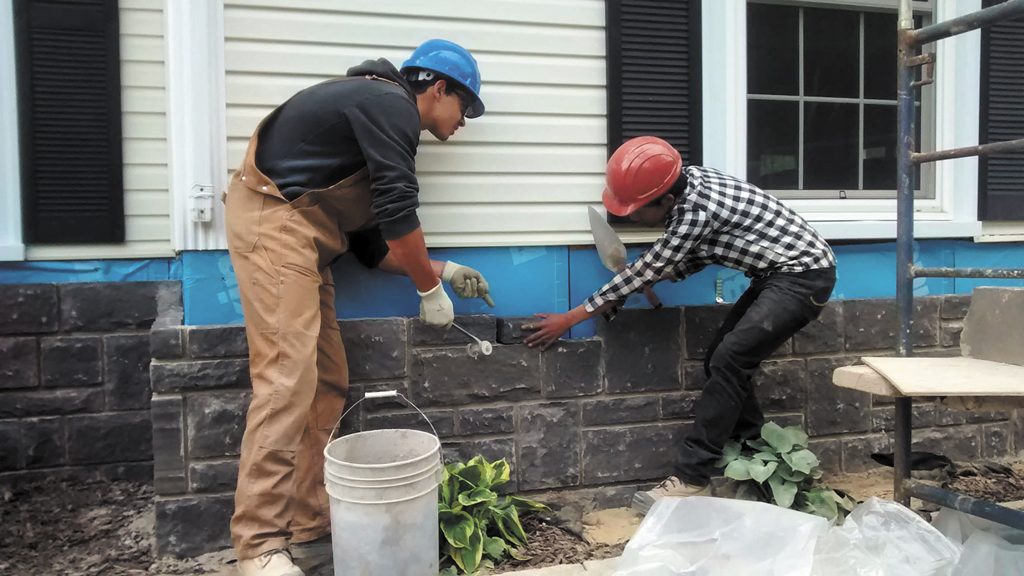New arrivals in Canada face additional vulnerabilities on the job, according to studies by Institute for Work and Health (IWH) in Toronto.
Agnieszka Kosny, a of the social and behavioural sciences department at IWH says many immigrants face challenges because they don’t speak English to start with and because the experience and certification they earned in their homelands aren’t recognized in Canada.
“They end up taking precarious work in often hazardous workplaces,” she says and it adds up to increased risk for injury on the job.
“Also, they don’t know they can refuse dangerous work,” she says.
“And often they don’t want to refuse because they may have got the job by a referral from someone in their community. Refusing work or complaining would then reflect badly on that person who may also be an elder in the community. It wasn’t just that they feared losing the job.”
As part of a study released last fall, the research team interviewed 110 recent immigrants and refugees for up to an hour in Ontario and held focus groups with those who had been in Canada less than three years.
Some did get WHMIS training, she says, but most of the training they reported getting was around clients and customer safety and safe food handling but not workplace occupational safety training.
There’s a distinct lack of occupational health and safety (OH&S) awareness from the point of arrival to Canada, she says, with most of the brochures and orientation focused on day-to-day challenges in adapting to life in Canada.
Immigrant men are twice as likely to have a work related injury requiring medical attention than Canadian men,
—Agnieszka Kosny
Institute for Work and Health
That is perhaps understandable, say experts, given that new arrivals face an overwhelming barrage of change, from language to culture, to getting work, to finding health care, food shopping, money, housing and navigating transportation
While the survey and ongoing research doesn’t look specifically at construction jobs the findings are applicable to almost any workplace where manual labour is involved.
Generally, new immigrant workers are much more likely do sustain a workplace related injury in the first month, and in temporary work placements were even more likely to get hurt.
“We found immigrant men are twice as likely to have a work related injury requiring medical attention than Canadian men,” she says and some of the other findings were unsettling.
The study group was comprised of 55 per cent women with 54 per cent from the Middle East, 15 per cent from South Asia and 11 per cent from South America and the Caribbean.
They had held much more diverse and high level jobs in their home countries including engineering, education, skilled trades, business and health.
Their first jobs were generally classed as poor quality employment and more for survival than career path. Most had found those jobs through family or community connections.
Some reported being reprimanded after getting injured on the job and many reported lack of protective equipment and long hours which impacted attention span. Others reported being required to “volunteer” at jobs to gain experience with the hopes of getting hired.
The latter is an issue, the IWH reports, because volunteers aren’t usually covered under OHSA (Occupational Health and Safety Act) or WSIA (Workplace Safety and Insurance Act).
Generally, the study found, OH&S training was low level and most of the workers were not aware of Ontario regulations and laws around employment standards.
They also knew nothing of their employers’ responsibilities to ensure they were trained on any equipment, briefed on any potentially hazardous materials or what they should do if asked to do something unsafe or in the event of an injury.
Kosny says the challenge now is to inform new arrivals in Canada about their rights in the workplace and about basic OH&S requirements.
However, finding out where and when and how to educate them remains the hurdle.
“The social agencies doing orientation don’t have the budget or expertise in OH&S,” she says. “So we have to find some funding for this.”
Sending people to websites or pushing brochures into their hands isn’t an acceptable strategy, the IWH report notes and while there are good employers who take safety seriously there are too many who don’t.




Recent Comments